Butterfly Eggs: Where Do Caterpillars Come From?
Updated: Aug. 09, 2023
Out of the blue, caterpillars appear in the garden. But where do caterpillars come from? See butterflies laying eggs on host plants.
First Comes Egg, Then Comes Caterpillar
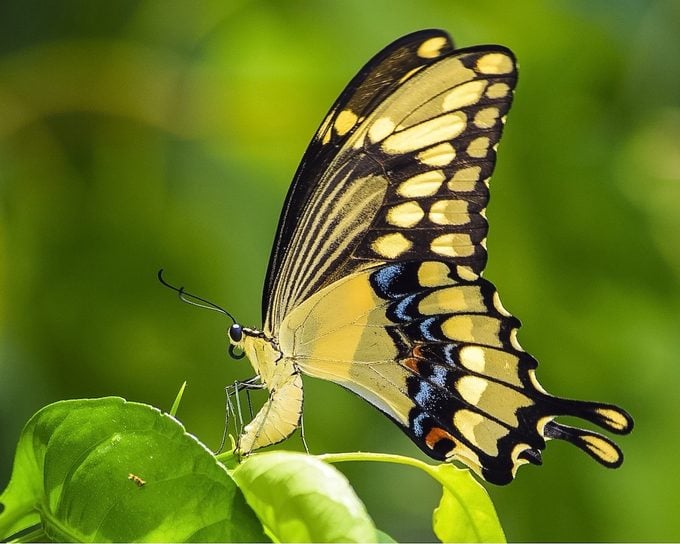
If you’re a good butterfly gardener, your garden is filled with nectar flowers. If you’re a great butterfly gardener, your garden also includes a variety of host plants, the plants that caterpillars eat. Most butterfly caterpillars are very particular, eating only plants from one family. Monarch caterpillars eat milkweed, black swallowtail caterpillars eat plants in the parsley family, and so on. And they’re able to do that because female butterflies carefully select the right plants and then oviposit, or lay their eggs. They do so by carefully bending the tip of their abdomen up and squeezing out those eggs one by one. Did you know that caterpillars come from eggs? Take a look.
Pictures of Butterflies Laying Eggs
The eggs and egg-laying habits of butterflies are as varied as they are. Some lay eggs individually on the undersides of leaves; others on the top sides. Some lay eggs in groups, and the caterpillars hatch and feed close together for a time. Still others stack their eggs in little towers. Butterfly eggs can be round, ovoid, or shaped like little grains of rice. They can be red, yellow, green, white, cream, and more.
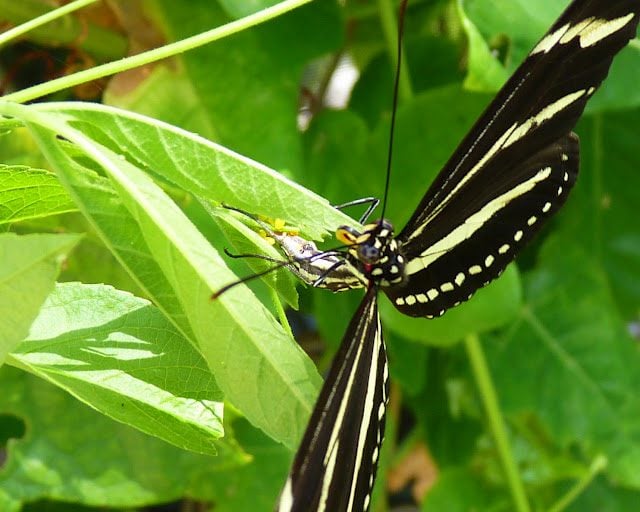
The zebra longwing butterfly lays yellow eggs in clusters at the end of passionvines, her host plant.
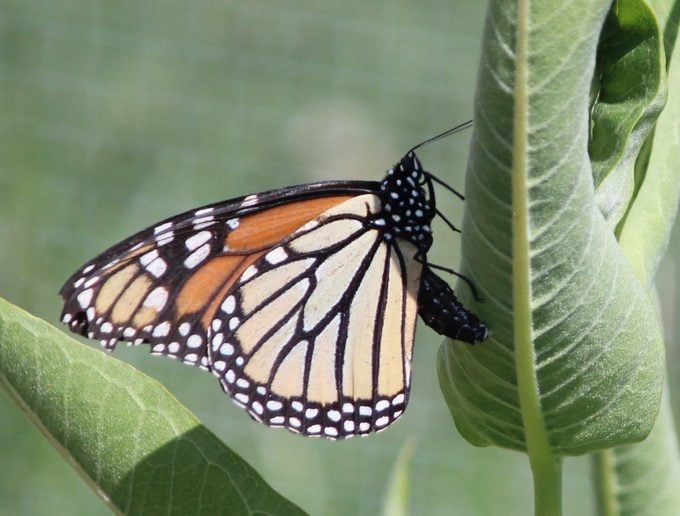
Monarch butterflies lay their eggs on milkweed plants. What does a monarch caterpillar and chrysalis look like?
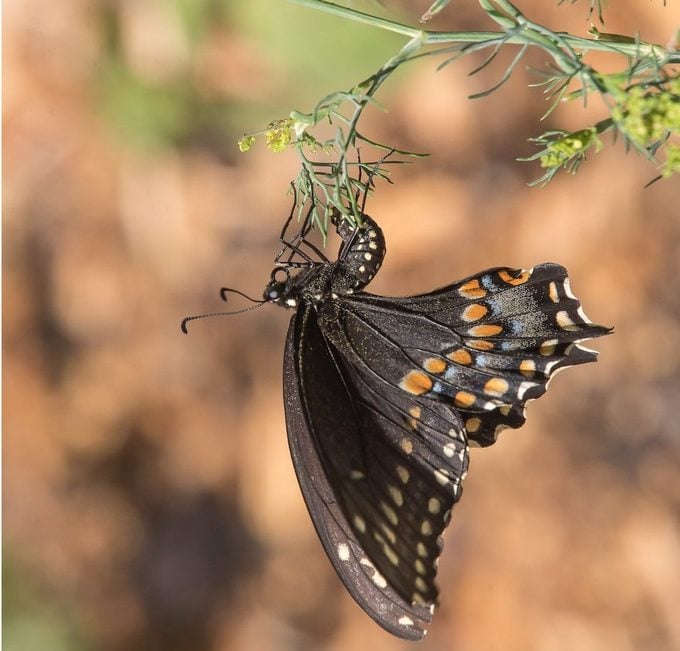
Reader Beate Pohlig spotted a black swallowtail depositing single yellow eggs on a dill plant. Caterpillars will feed on the plant after hatching from the eggs.
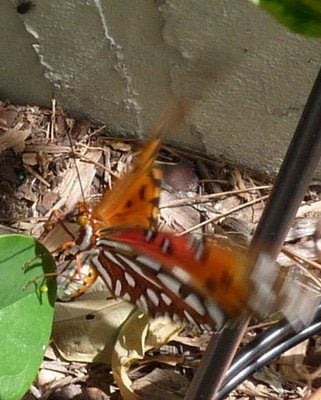
The gulf fritillary also lays eggs on passionvine, but lays her tiny yellow eggs singly and generally on leaves.
This queen butterfly is laying eggs on the underside of milkweed leaves. They are small and white, laid singly. Those yellow dots you see in this picture aren’t eggs; they’re aphids.
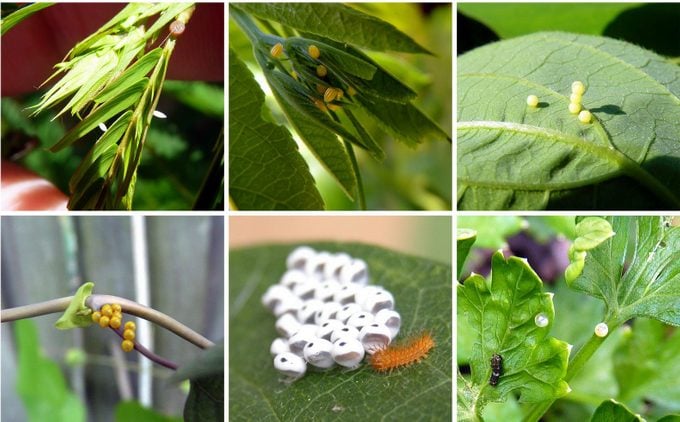
Row 1, from left: Cloudless sulphur eggs on cassia; zebra longwing eggs on passionvine; long-tailed skipper eggs on bean plants.
Row 2, from left: Polydamas swallowtail eggs on pipevine; Io moth eggs on hackberry; black swallowtail eggs on parsley.
Other Types of Insect Eggs
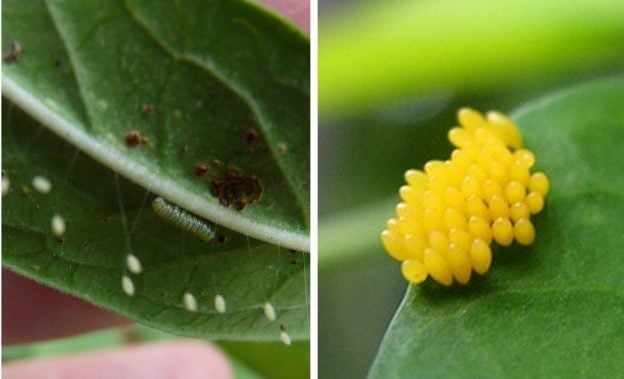
Other insects lay eggs in the garden, too. Shown above are lacewing eggs on the ends of their delicate strings (left),
and ladybug eggs, always laid together in little yellow clusters (right).
Next, learn everything you need to know about butterfly anatomy.




















